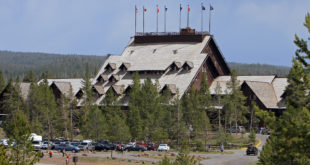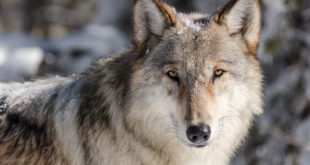The FWS noted that since the wolf re-introduction projects in central Idaho and Yellowstone National Park thirteen years ago (starting in 1995), the population of wolves had grown from almost nothing to approximately 1,500 in 2007. The original target had been 10 breeding pairs and 100 wolves in each of three states (Wyoming, Idaho, Montana) for three consecutive years, which was met and exceeded in 2002. Lynn Scarlett, Deputy Secretary of the Interior Department, said, “The wolf population of the Northern Rockies has far exceeded its recovery goal and continues to expand its size and range.” From the point of view of the FWS, this is a “remarkable conservation success story.”
As the thousands (probably hundreds of thousands) of people who have followed the “Wolf Wars” of the last fifteen to twenty years know, nothing about the wolf re-introduction in North America is uncontroversial. Delisting–removal of Northern Rockies wolves from the U.S. Endangered Species List–will certainly touch off another storm of debate. Delisting was part of the original package, part of the compromises that were made to allow re-introduction to take place. It was agreed that when wolves reached their target population, they would be delisted and the individual states involved (Montana, Wyoming, and Idaho) would take over wolf management from the federal government. However, the states would not be given control until all three produced wolf management plans satisfactory to the FWS. Theoretically this could have happened in 2002, but fierce opposition to the whole approach, especially in Wyoming and Idaho, tied the management plan development into knots of debate, court cases, and bureaucratic wrangling.
The states eventually did produce wolf management plans. All of them call for some form of limited hunting of wolves (not, of course, within the boundaries of national parks), and each state has announced plans for a wolf hunting season later in 2008. For those who want all re-introduced wolves dead, this ‘limited season’ is a joke. For those who wish to see wolves spread throughout the Rocky Mountains under the protection of the Endangered Species Act, delisting and the management plans are anathema. These may seem like extreme positions, but they are more like the common denominators that drive the controversy. Legal challenges are expected, probably from both sides. The volume of the argument will increase as the fall approaches.
[See the WOLVES section on the Yellowstone Insider web site for background information.]

NPS photo
 Yellowstone Insider Your Complete Guide to America's First National Park
Yellowstone Insider Your Complete Guide to America's First National Park





